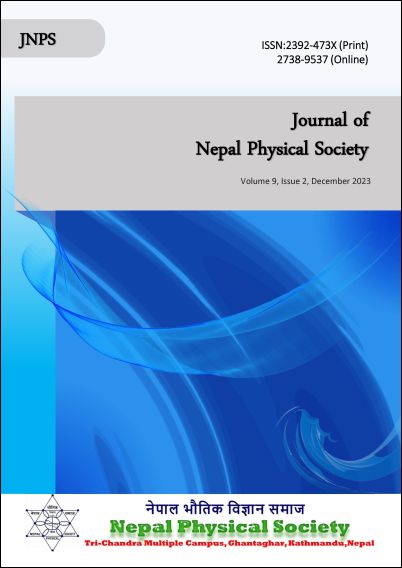Exploration of Anti-Diabetic Potential of Rubus ellipticus smith through Molecular Docking, Molecular Dynamics Simulation, and MMPBSA Calculation
DOI:
https://doi.org/10.3126/jnphyssoc.v9i2.62410Keywords:
α-amylase, Computational, Binding affinity, HyperclycemiaAbstract
Diabetes is a chronic metabolic disorder affecting a majority of the population worldwide. Hyperglycemia leading to diabetes mellitus could be managed through the inhibition of human pancreatic α-amylase enzyme. Phytochemicals are frequently reported to possess anti-diabetic activity through inhibition of normal functioning of α-amylase. This study aims to find potential α-amylase inhibitors from Rubus ellipticus Smith with molecular-level understanding using different computational tools. From the molecular docking calculations, rubuside F and rubuside D possessed good binding affinity of -10.0 kcal/mol and -9.9 kcal/mol, respectively better than the reference drugs (acarbose, miglitol, voglibose and metformin). Both the compounds showed good geometrical stability from molecular dynamics simulation accessed in terms of RMSD, hydrogen bond count, SASA, Rg and RMSF. Binding free energy changes of -27.92±4.15 kcal/mol and -28.75±4.15 kcal/mol, respectively for the two ligands indicated sustained thermodynamic spontaneity present in the adducts. The two phytochemicals could be proposed as potential inhibitors of human pancreatic α-amylase for the treatment of diabetes. Further, in vitro and in vivo experiments are recommended for the verification of computational insights in the course of drug design and discovery process.
Downloads
Downloads
Published
How to Cite
Issue
Section
License
All right reserved. No part of this Journal may be reproduced in any form or by any electronic or mechanical means, including information storage and retrieval system, without permission in writing from the publisher, except by a reviewer who may quote brief passage in a review. The views and interpretation in this journal are those of author(s) and they are not attributable to the NPS.




